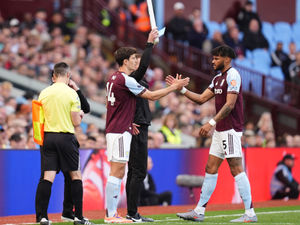Matt Maher: New West Brom boss can’t be left to fly solo at The Hawthorns
How do you solve a problem like the Albion?
That is the considerable question which will be asked of the Baggies new, yet-to-be-identified head coach.
Whispers from inside The Hawthorns are that, having gone down the tried-and-tested route and drawn a blank with Steve Bruce, the club now want to employ an emerging, young manager who can both re-energise the current playing squad and help lay the foundations for long-term success.
A “club builder” is the phrase in vogue for this type of coach. Football is very much a copycat industry and Albion won’t be the only club in the next few months trying to “find the next Graham Potter”.
It sounds good. It sounds right. Or at least it does until you consider the notion of building a club is far too large a remit for one man. For all Potter’s rightly lauded work at Brighton, he had the benefit of stepping into a an existing, strong infrastructure, where his task was to concentrate mainly on the business of coaching and everything else, most notably scouting and talent identification, was dealt with elsewhere.
Whoever replaces Bruce at Albion will have none of that, a recurring theme of the club’s recent troubles is of too much responsibility being placed in the hands of individuals, with insufficient attention paid to establishing an effective and durable framework.
It wasn’t so along ago, of course, the Baggies ran one of the best operations in the game. When Dan Ashworth was technical director, they had a model which could genuinely be described as revolutionary and the envy of every mid-ranking club which aspired to compete with those possessing greater budgets.
It is not an exaggeration to say it laid the blueprint for the likes of Brighton and Brentford, with a few tweaks, to follow. Heck, Brighton even appointed Ashworth to do the job for them.
Yet at Albion the machine he built now feels like a distant memory.
That is not to say the club were foolish enough to abandon the plan when he was poached by the FA a decade ago. Instead, the failure of former owner Jeremy Peace to be bolder, or look outside the club, when sourcing his replacement might be considered the first of several poor decisions which have eventually led to the current situation.
Richard Garlick, who stepped up from club secretary to fill Ashworth’s shoes, was and remains an excellent administrator but lacked the same depth of football knowledge as his predecessor.
He was the first of five to have occupied the technical/sporting director role since 2013, all of whom have even proven the wrong fit or seen their influence restricted. Luke Dowling, who departed in June last year, was the last. He is yet to be replaced.
There may be no greater indication as to the recent rate of change at The Hawthorns as the fact the last three managers have been recruited by three different men. Dowling led the appointment of Sam Allardyce, while now demoted former chief executive Xu Ke plumped for Valerian Ismael, with current CEO Ron Gourlay moving for Bruce when the former turned out to be a disaster. It is Gourlay who is also tasked with finding the next candidate.
The 51-year-old, to his credit, knows this is not best practice. He knows he needs help. Bringing in a director of football has, he previously claimed, been near the top his agenda since arriving at the club in February.
But recent indications are an appointment is not close. Gourlay, who described combining the duties of CEO and sporting director during the summer transfer window as “incredibly time consuming” was only able to say a director of football would be installed “by this time next year” when discussing the issue in July.
That is nowhere near quick enough in an industry where 12 months is an age. At Albion’s current rate of progress, it is at least two managerial appointments.
Gourlay, explaining the delay, said some of the club’s targets were on “six, nine or even 12-month notice periods”. Well, OK. Yet if Albion really are serious about rebuilding their infrastructure and hiring the best director of football they can find, surely this would be the time to be bold and proactive, rather than wait?
Sacking Bruce so early in the season was obviously not part of the plan. But it has created a situation where the Baggies are looking for a head coach or manager to build the structure around, without first having laid any foundations.
Though it could work, should Gourlay find the right candidate, the pressure on the chief executive to hit the target in what is arguably the club’s most important managerial appointment for a generation is considerable.
Taking the long-term view in a sport where so much importance falls on short-term results isn’t easy.
With Premier League parachute payments due to expire at the end of this season and ongoing concerns about owner Guochuan Lai, the Baggies certainly cannot afford to write the current campaign off.
The first task, for whoever replaces Bruce, is to get a squad which should at least be capable of challenging for the play-offs moving up the table.
Beyond that, the focus for Gourlay must be on restoring some stability and infrastructure to the club. For too long now, decisions have been dictated by immediate need, whether it be trying to stay in the Premier League, or re-enter it. Now the club needs a reset and while it won’t be straightforward, it is necessary if not vital.
If Albion want to start understanding what works best for their future, they only need to look into their past.




